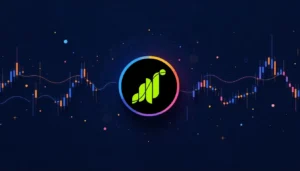Table of Contents
Overview
The concept of slippage holds substantial importance in the crypto world. Whether you’re a seasoned investor or a newcomer, understanding how slippage can impact your trades and learning effective strategies to mitigate its effects is crucial. This article dives deep into the realm of slippage, exploring its causes, consequences, and, most importantly, practical methods to avoid it.
In the world of cryptocurrency, where changes happen in the blink of an eye, understanding the concept of slippage becomes crucial. Whether you’re tracking Bitcoin, Ethereum, or any other coin, their prices can shift in mere moments. This constant movement brings incredible opportunities, but it also presents challenges, especially for traders. Among the various factors affecting the crypto realm, slippage is among the ones that cannot be ignored. In this article, we will take a look at slippage in crypto, what it entails and, more importantly, how to navigate and mitigate its effects in a market that operates at lighting speed.
What is Slippage?
When it comes to strategic crypto trading, decisions are driven by specific target prices. Rarely do traders venture into the market without a target price in mind. Whether entering a buy or sell position for a cryptocurrency, having a predetermined price in mind is a cornerstone of effective trading. However, the concept of slippage can disrupt these well-laid plans.
Slippage occurs when the executed price of an order differs from the intended price. This variance arises due to market dynamics that transpire between the order placement and execution. You might be expecting to lose a certain amount when your stop loss hit but slippage can add more to that loss. In the fast-paced world of cryptocurrency trading, where seconds matter, this difference can be substantial.
The Two Faces of Slippage: Positive and Negative Effects
Slippage’s impact on trades can be classified as either positive or negative.
Positive Slippage
A positive slippage scenario unfolds when an order gets executed at a more favorable price than the one initially requested. For instance, if a buy order is placed and executed at a lower price than anticipated, the trader gains an advantageous position. This not only secures a more appealing buying rate but also opens the door to greater profit potential.
Negative Slippage
On the flip side, negative slippage unfolds when an order is executed at a less favorable price, often due to sudden market fluctuations. This can lead to unexpected losses or reduced profitability. It is important for traders to keep negative slippage in mind always as it can significantly affect your losses.
Slippage Examples
Let’s dive into a couple of scenarios that exemplify both negative and positive slippage.
Negative Slippage Example
Imagine you’re eyeing Cardano, and you set your sights on snagging it at $0.30 per token. The price seems to be heading in that direction, so you swiftly place a buy order. However, as your order gets processed, you find that you’ve entered the market at $0.31 instead of your intended price. This is a classic case of negative slippage, where market fluctuations caused your execution price to deviate unfavorably from your initial plan.
Positive Slippage Example
On the flip side, consider the scenario where you’re interested in purchasing Ethereum at $1,300 per unit. You submit your order, and to your delight, when it gets executed, the price surprises you by coming in at $1,285. This is a stroke of positive slippage luck, also known as no slippage. It means your order got filled at a better price than you expected, boosting your potential for profit.
Unleash the potential of leverage trading! Join Bybit today with our link, complete KYC, and earn up to a $40 bonus on a $100 deposit. Don’t miss out on this exclusive offer; claim your bonus now!
Causes of Slippage
In the crypto world slippage mainly arises due to two factors: price volatility and low liquidity.
Price Volatility
Cryptocurrencies are known for their rapid and often unpredictable price changes. This inherent volatility leaves trade orders susceptible to slippage. Market dynamics like supply and demand, investor sentiment, user excitement, and regulatory shifts can swiftly impact cryptocurrency prices. These variables, coupled with the relative newness of the market, create an environment where prices can shift dramatically between order placement and execution.
Low Market Liquidity
Certain cryptocurrencies have limited popularity, resulting in low market liquidity. Such tokens are particularly prone to slippage. When liquidity is low, the number of buyers and sellers is limited. As a result, placing an order can trigger price changes as the system matches the order with available counterparties. The bigger the order the higher the chances of this happening. This leads to price shifts from the intended execution point.
The more liquid the market, the lower the likelihood of significant price slippage. Imagine you intend to purchase one unit of a crypto asset priced at $500. If the current best order in the book is for only 0.5 units, the order cannot be immediately filled. The system searches for the next level to fulfill the order, but this escalates the price. Consequently, you end up paying more to complete the trade. In such instances, the best market price becomes a less favorable rate.
Understanding Slippage Tolerance
Slippage tolerance is a crucial mechanism to safeguard your trades against unexpected price shifts. Setting a slippage tolerance percentage allows traders to proactively handle price variations. By doing so, traders indicate their willingness to accept price changes within a specified range, whether these changes move upward or downward.
Low Slippage Tolerance
Opting for a low slippage tolerance means adhering to stringent price boundaries. If a trader, for instance, selects a 4% slippage tolerance and intends to invest $200 in a cryptocurrency, the trade initiates only if the price remains within a maximum of $208 or a minimum of $192. Beyond these limits the trade won’t proceed. So if the price is $209 or $191 nothing will happen.
High Slippage Tolerance
A high slippage tolerance provides flexibility in the face of substantial price fluctuations. This approach proves valuable in volatile markets or with crypto projects marked by lower liquidity but significant trade volume i.e., cryptocurrency launch projects. Despite notable price shifts, transactions are executed within the predefined slippage tolerance range.
The Risk of Front-Running
However, embracing a high slippage tolerance comes with the risk of front running. Front-running involves exploiting advanced information to capitalize on securities trading. An attacker strategically places larger transactions before and after a pending trade, forcing the trader to accept a higher slippage price as per the preset tolerance. The difference in value becomes the front-runner’s gain.
How to Avoid Slippage on Decentralized Exchanges DEXs
When it comes to avoiding slippage on DEXs, traders have several effective methods at their disposal. These approaches can enhance trading precision and minimize the impact of price fluctuations.
Optimize Transaction Speed with Higher Gas Fees
On blockchain networks like Ethereum, transactions are facilitated by paying a gas fee to network validators. This fee ensures the validation of transactions by incentivizing validators to participate. Traders can accelerate the processing of their transactions by opting to pay a higher gas fee. This elevated fee pushes their transaction ahead in the validation queue, reducing the risk of slippage. Tools like Etherscan provide insights into the recommended gas fees to prioritize transactions effectively.
Embrace Layer 2-based DEXs for Enhanced Efficiency
Most DEXs currently operate on layer 1 blockchain networks, which can face congestion during peak periods. For instance, Uniswap transactions directly rely on Ethereum’s network. During network congestion, trade execution can slow down, amplifying slippage risks.
Layer 1 networks offer scaling solutions, such as sidechains like Polygon. This parallel network ensures rapid transaction processing, sidestepping the mainchain’s limitations. By utilizing layer 2-based DEXs like Polygon, traders can experience expedited transactions, reduced slippage risks, and lower gas fees.
Moreover, traders can tailor their slippage tolerance within most DEX platforms. Although a low tolerance might prevent immediate trade execution, it safeguards against significant losses due to slippage-induced price shifts.
How to Avoid Slippage on Centralized Exchanges CEXs
Just as with DEXs, traders can implement strategies on centralized exchanges to minimize the impact of slippage and enhance their trading precision.
Leveraging Limit Orders for Strategic Trading
When engaging in trading on centralized cryptocurrency exchanges, traders can adopt a range of measures to mitigate slippage-related losses. A powerful approach involves utilizing limit orders instead of executing trades at market prices. As previously discussed, limit orders come with the trade-off of potential non-execution, but they eliminate the risk of slippage altogether.
Strategic Timing
Traders can opt to execute trades during periods of reduced market volatility. Steering clear of high volatility windows, such as the European-to-U.S. crossover or peak U.S. market hours, can help mitigate slippage risks. Furthermore, avoiding trading during significant market events, such as major economic data releases or central bank announcements, is recommended to sidestep abrupt price shifts.
Breaking Up Large Trades
For traders dealing in substantial volumes of cryptocurrency, strategically dividing large transactions into smaller portions can prove beneficial. Fragmenting a sizable trade into a sequence of smaller ones can help mitigate market impact and potential slippage-induced losses. This approach reduces the likelihood of significantly moving the market with a single substantial trade.
Conclusion
In the fast-paced world of cryptocurrency trading, where prices can change in an instant, understanding and managing slippage becomes paramount. Whether on decentralized or centralized exchanges, traders can adopt various strategies to navigate this challenge. From adjusting slippage tolerance and utilizing limit orders to timing trades during periods of low volatility and breaking up large transactions, a proactive approach can significantly minimize the impact of slippage. You might have to face slippage in some instances but in other instances you can minimize it by following the tips mentioned above.
Enhance Your Crypto Trading Skills With Our Legends’ Trading Masterclass
Empower your crypto trading skills with our Legends Masterclass. Sign up now and take advantage of our limited-time discount offer! Join the class today.







